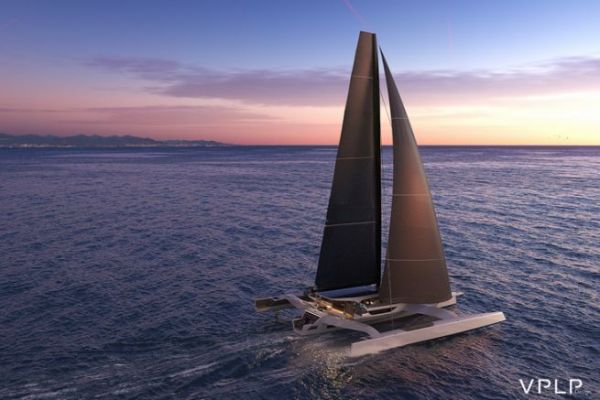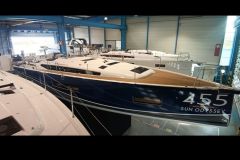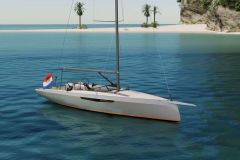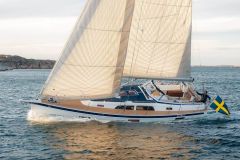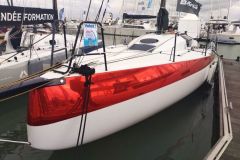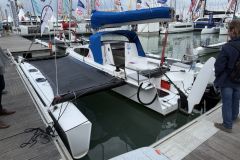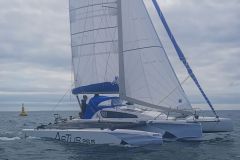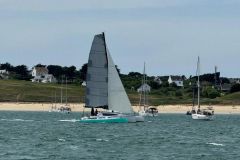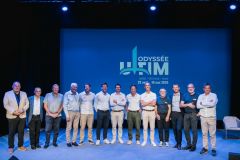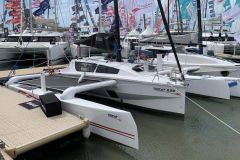Anahita is a cruising trimaran of 31 meters out of the ordinary. Built in Brittany, she blends racing naval architecture with comfortable living on board. For yachtsmen, this project raises a number of practical questions: what does this configuration offer? What are the sailing advantages? What do we retain in terms of construction, equipment and program?
Why a trimaran for ocean cruising?

With its 3 hulls, Anahita immediately stands out from conventional catamarans. This choice of architecture reduces the draught to 2 meters, offers greater stability when sailing and at anchor, and increases safety in rough seas. According to its designers, the trimaran is faster, more balanced and safer.
Capable of cruising at 25 knots and crossing the Atlantic in 6 days, Anahita is designed for sailors who want to combine performance and comfort. Its lightness (35 tons light, 60% less than a traditional yacht of the same size) means it can reach high speeds without compromising range or comfort.
Living spaces designed for cruising
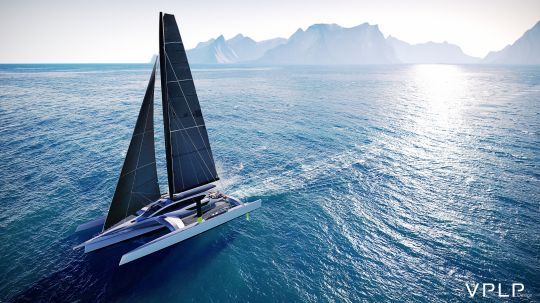
This trimaran isn't just about numbers. On board, the 123 m² of living space is fully customizable. The 12 m² owner's suite with direct access to the deck, the 25 m² cockpit and the 160 m² of trampolines make this a real loft on the water. Everything has been designed to ensure fluid circulation, natural movement and accessible manoeuvring stations.
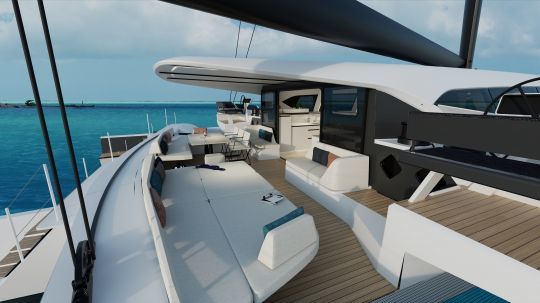
The interior, designed by Christophe Chedal Anglay, blends architecture and functionality. The result is a bright, airy space, suited to long-distance cruising and life on board. Anahita can accommodate 6 guests and 4 crew, with well-separated technical areas.
A boat that goes fast, far, without relying on ports

One of Anahita's strong points is her autonomy. Thanks to its 36 m² of solar panels and optimized management of energy flows, this trimaran is designed to sail far from infrastructures. It can anchor in areas inaccessible to vessels of this size, while maintaining an excellent level of comfort.

Boaters who enjoy sailing in isolated areas will find this a real advantage: no need to return to port to refuel or recharge. This type of configuration opens up a whole new range of navigation possibilities, particularly in areas with few facilities.
A construction inherited from ocean racing
Constructed from prepreg, vacuum-infused carbon, Anahita uses techniques derived from competitive sailing. CDK Technologies, a specialist in racing multihulls, assembles the platform. VPLP Design is responsible for naval architecture, structural calculations and the boat's lines.
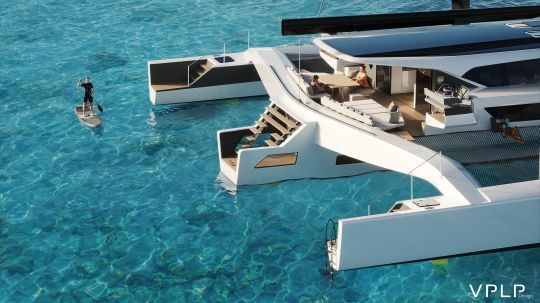
The contributions of the competition are visible: carbon mast by Lorima, roof designed by MerConcept, mechanical systems developed by Mer Forte. The whole package is light, solid and well suited to the constraints of an ambitious offshore program.
A boat that comes at a price, but says something about the future
Anahita is not a production model, nor is it a boat accessible to all budgets. But it says a lot about what cruising could become in the future: faster, more autonomous, more flexible in its programs. The first model is currently under construction, and is due to be launched in 2027. It has already been sold.


 /
/ 